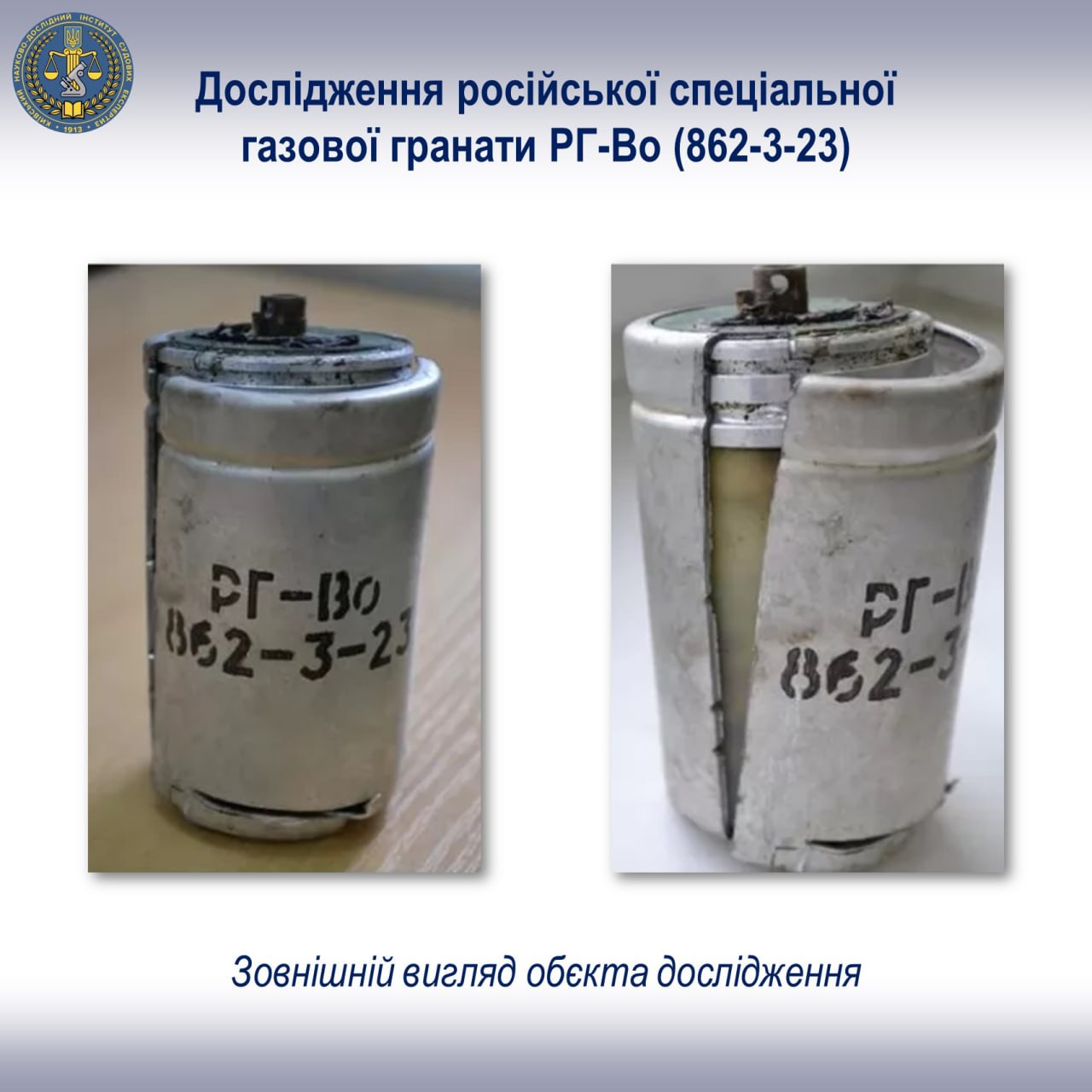Since the beginning of the full-scale war, Russians have used chemical weapons 1068 times
7 March, 2024 K-51 gas grenade. Photo from open sources Since the beginning of the full-scale Russian-Ukrainian war, Russians have 1068 times attacked the Ukrainian Defense Forces using ammunition with poisonous chemical substances.
The Command of the Support Forces of the Armed Forces of Ukraine reported on this. Mobile teams and other units of the Support Forces recorded 1,068 cases of the use of tear gas irritants equipped with poisonous chemicals. These substances are prohibited for warfare by Article 1, paragraph 5 of the Chemical Weapons Convention.
In February 2024 alone, there were 250 cases, including 244 cases of the use of VOG, 1 case of gas, and 5 cases of other munitions with a chemical substance.
 K-51 gas grenade at one of the Ukrainian forces' positions. September 2022, Ukraine. The photo is illustrative.
K-51 gas grenade at one of the Ukrainian forces' positions. September 2022, Ukraine. The photo is illustrative.
CBRN units take samples of soil, vegetation, and munitions fragments and send them for analysis.
Within the framework of criminal proceedings, documented cases of use of hazardous chemicals are submitted to the investigating authorities for investigation. Militarnyi reported on February 9 that Russian invaders intensified chemical attacks on the positions of the Ukrainian military in the operational zone of the Tavria operational and strategic group. It is reported that over the course of February 8, Russians dropped 6 munitions with chloropicrin, a tear gas chemical, from a UAV.
It is reported that Russians most often use K-51 chemical gas grenades.
?-51
The K-51 is a chemical gas grenade with a hard plastic body and metal bottom. It was developed in the late 1970s in the Soviet Union. The grenade's sealed case was filled with chloropicrin, a powdered, highly irritating non-lethal substance.
The impact of the K-51 is several times higher than that of grenades used to disperse demonstrators, as it was designed for the military and special services. The substance contained in the grenade causes irritation of the mucous membranes. This leads to suffocation with coughing and disorientation due to eye irritation.
 K-51 gas grenades.
K-51 gas grenades.
Photo from open sources
Last month, Militarnyi also reported that Russian invaders were using new RG-Vo special gas grenades containing a substance prohibited under the Geneva Convention against Ukrainian defenders. The new type of chemical munition is distinguished by its design and filling as it uses an irritant chloroacetophenone (CN).
 Research on a Russian RG-Vo hand grenade. January 2024.
Research on a Russian RG-Vo hand grenade. January 2024.
Photo credits: KSRIFE
Based on its use during the Vietnam War, chloroacetophenone (CN) was prohibited for use as a chemical warfare substance in accordance with the Geneva Protocol approved by the UN General Assembly in 1969.